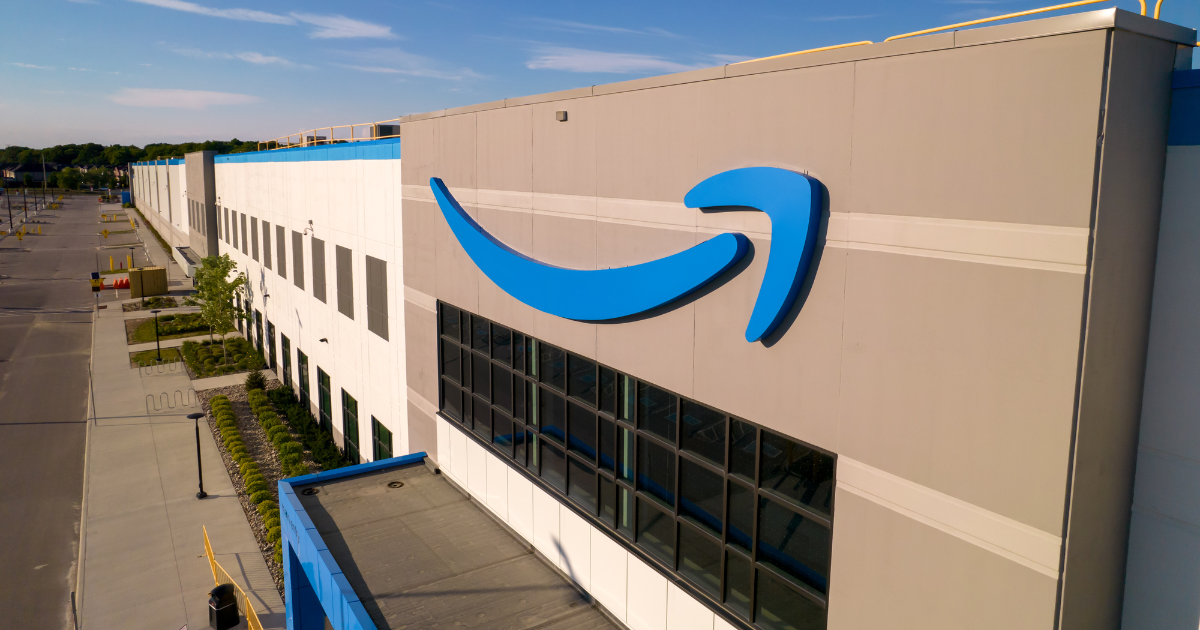
istock.com/tigerstrawberry
May 1, 2025
Should Amazon Have Displayed Tariff Costs?
Amazon declared it never intended to display the exact cost of tariff-related price increases alongside all its products after the Trump administration described the move as a “hostile and political act,” although some believe they should have.
Amazon said the idea was only explored for its low-cost Amazon Haul unit that competes with Temu and SHEIN, not the whole platform. Both Chinese fast-fashion upstarts are facing tariff hikes after the Trump administration removed the “de minimis” exemption that allowed goods less than $800 to arrive duty-free.
Amazon said in a statement that even displaying prices on Amazon Haul was “never approved and [is] not going to happen,” although the statement came after President Donald Trump’s high-profile call to Amazon founder Jeff Bezos.
Displaying the import fees would have made clear to American consumers that they were shouldering the costs of the tariff policies rather than China, as Trump’s team has often claimed.
“The public could have used Amazon’s price transparency,” wrote the Wall Street Journal’s Editorial Board about Amazon’s speculated move. “Tariffs are taxes, and it’s helpful to know how policy choices affect final prices. Some shoppers might say the additional cost is worth it to support Mr. Trump’s policy. But there’s no denying that they’re paying, and everyone is better off knowing how much.”
Allison Schrager, a Bloomberg Opinion columnist covering economics, wrote that taxes have long been listed separately in the U.S, as have add-on costs such as baggage fees, to better inform consumers of underlying costs. She wrote, “The problem is not the fees — it’s that, too often, they are a surprise.”
Describing the “conundrum” retailers face, a New York Times’ DealBook column pondered, “Do they eat tariff-related cost increases and hurt their bottom line, and investors? Do they pass the higher costs onto shoppers, potentially drawing their ire? Or do they level with consumers, and dare angering Trump?”
The debate comes as most of Amazon’s sales come from independent sellers on its site, with a large percentage of them selling items from China. The CEOs of Walmart, Target, and Home Depot recently warned Trump that his policies could hurt supply chains, empty shelves, and increase prices.
Reports arrived in early April that some retailers and food establishments were already adding surcharges at checkout to call out the tariff-related costs, although they seemed politically driven.
Jolie Skin, which makes filtered-water showerheads, added a “Trump Liberation Tariff” to its online checkout. Founder Ryan Babenzien said in a LinkedIn post about the move, “We think transparency is the way to go here and I am giving Trump full credit for his decision to add this Tariff to all U.S. consumers.”
Discussion Questions
Do you see more pros or cons in adding a line-item tariff surcharge at online checkout or on in-store bills?
Is the decision to list a tariff fee much different for Amazon versus smaller online sellers or mom & pops?
Poll
BrainTrust
Brad Halverson
Principal, Clearbrand CX
Brian Delp
CEO, New Sega Home
Warren Shoulberg
Senior Contributor, The Robin Report
Recent Discussions








Full tranparency is great (at least in theory): selective transparency, not so much, since it opens itself up to charges such as this. Of course what we should really be asking is “what’s wrong with a ‘hostile and political act'(at least this one)?”…the tariffs themselves certainly are!
Craig, education is a “hostile and political act.”
Just say “Know!”
Amazon has a right to display whatever it wants. It has a right to call out the impact of tariffs on its business and prices as it sees fit. This is a free nation in which the government is not the master of the people. The White House should not be throwing hissy fits because people or companies are exercising their right to free speech.
The White House shows hissy fits when someone dares point out that a tattoo on someone’s hand is a fake. It’s hissy central.
Absolutely and shame on them for giving in to the reign of terror. Consumers need to understand this is a tax on them and what exactly this farce is costing them. That will put an end to it pretty quickly. Is this the same Jeff Bezos who reinvented retail and now he’s afraid of a little man who doesn’t have a clue on how business works?
In following what’s good for the customer, in saving them time and hassle, showing tariff line-items have two benefits:
1) Customers have visibility into product costs, especially moving targets like added temporary costs until/if trade agreements are put in place.
2) Customers who don’t want to pay tariffs can search for alternative products or sellers. Amazon can even display a tab for products “Made In America” as an alternative.
In the end, it’s all about helping the customer shop.
I like your benefits.
It is important to see the actions of one man on a nation. Every day this goes on with sound bites like, “ so they’ll get 2 dolls instead of 30” by the President is a slap against all retailers. Lawsuits should be filed before Main Street is decimated.
Already happening – a coalition of boardgame producers and toy stores filed a suit last week, as well as Chicago-based Educational Insights. The toy trade group surveyed its membership a couple weeks ago & almost half of small and medium brands said they would be out of business by the end of summer if nothing changes. There’s a toy industry convention one month from now I’ll be exhibiting at in San Antonio & none of us know what to expect.
i can’t imagine what the White House is thinking….that one day a blouse on a site costs $22.00, and the next day it costs $55.00, just like that?
We all need to wake up and stop going along with outrageous “demands.”
Thinking ??
There is a possibility that customers may react negatively to visible surcharges, perceiving them as hidden fees or additional costs that undermine trust in the brand. Consequently, future purchases might be discouraged as a result of frustration.
In contrast, customers may be more likely to accept the surcharge if transparent communication about the reason for it is made, particularly if they believe that it contributes to a cause they are passionate about.
Large companies such as Amazon may wish to maintain their reputation and customer loyalty by being transparent about their surcharges, since they have the resources to communicate effectively and manage any potential backlash.
However, smaller online sellers might have difficulty implementing the same approach due to a lack of trust or communication channels with their customers.
Through transparency, they may be able to distinguish themselves from larger competitors by emphasizing their commitment to honesty and customer service.
The only negative I see is that showing the effect of tariffs will boggle the minds of consumers who still believe China is paying the tariffs and making America rich. Who ya goin’ beleive?
Amazon is a private company that, in normal times, can show whatever it wants to show on its pages. Transparency would go a long way to building trust with their customers. Sadly that didn’t work out.
A million bucks just doesnt buy what it used it.
Although I personally love the idea, this type of tactic particularly for someone like Amazon could open them up to risk of exposing their first costs. Given the variety of vendors and the fluctuations in their pricing it is a much harder task than straight math. This is especially so if you’re trying to attribute tariff pricing to pool stock inventory that was received before and after. It absolutely makes sense for a player like an Everlane that has transparency built into their structure.
Full transparency is a good thing. Too many consumers do not understand that tariffs on imports from other countries are a tax on U.S. companies that are likely to ultimately be paid by customers in higher prices.
The lack of financial literacy in the U.S. is hard to beleive.
This falls under the transparency column. I mentioned this in the commentary from a RetailWire article posted in the past few weeks. When you explain to your customers (who want to know) why there is a price increase, they tend to accept the explanation. Knowledge is a confidence builder. It also justifies in their minds why they should be willing to buy at the higher price.
What’s the big deal? These tariffs are consumer taxes & should be noted as so. I’m disappointed Amazon capitulated so quickly & easily.